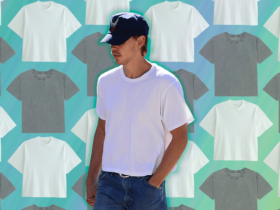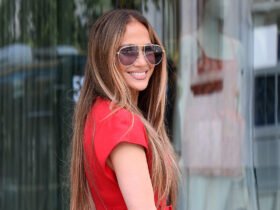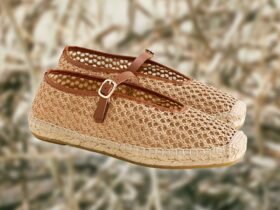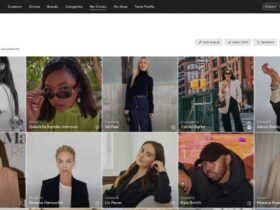At retailers across the US, it’s a battle of the sunscreens.
In one corner is Naked Sundays, whose lavender-tinted tubes arrived in 700 Ulta Beauty last month (and whose SPF50 “glow mist” and “priming lotion” have already sold out). Founded in 2021 by the author and TV news host Samantha Brett, it was the first Australian prestige skincare-suncare brand to launch into the great wide US beauty market this year, and it also wasn’t the last.
In the opposite corner is Ultra Violette, which debuted at Sephora in packaging of a much deeper purple. The brand was founded in 2019 by Bec Jefferd and Ava Chandler-Matthews, alumni of the Aussie beauty retailer Mecca, to create highly-wearable sunscreens infused with beauty benefits. Both brands want to become world famous, and both knew they had to conquer the US, the world’s largest market for sunscreens, to do so.
The US has become a compelling proving ground for other brands — mostly from Australia, South Korea or Japan — as well as a regulatory headache. Many like Beauty of Joseon have used grey markets like Amazon, TikTok Shop or import stores to feed growing demand, but the ones hoping to enter US retailers or open stateside fulfilment centres are forced to reformulate to the US’ regressive standard.
The world has an uneven approach to regulating sunscreens. In most jurisdictions, including Japan, Korea and the EU, the product is a cosmetic; in Canada, Australia and the US, it’s regulated as an over-the-counter drug, with its active ingredients — the UV filters themselves — subject to strict approval. This isn’t a problem for Australia, which has a wide variety of approved filters that mirror contemporary standards in Asia and Europe, but is a point of vexation in the US, which hasn’t approved a new filter since 1996.
One new chemical filter is currently under the FDA’s review, which wouldn’t open the door for innovation so much as begin turning the knob. US brands like Supergoop, with its popular beautified Glowscreen, or dermatologist brands like Elta MD and La Roche-Posay have done their best to create covetable formulas under the FDA’s oppressive regime, but now risk ceding market share to entrants from abroad.
“We really built the business outside of the US,” said Bec Jefferd, co-founder of Ultra Violette. After Australia, the brand launched in the Middle East and UK, where it became a best-seller at Space NK, and saved the US for last. To truly win the category, Jefferd remembers thinking: “We’ve got to tackle the biggest beauty market in the world.”
Foreign Influence
In countries like Australia, which sits under a thinner part of the ozone layer than other countries, or Japan, where women regularly don UV-protective clothing or accessories like parasols in addition to topical SPF, the concept of shielding one’s skin from the sun is a more urgent part of one’s regular beauty routine.
“We do not accept anything less than SPF 50 on our skin as a nation,” Brett said. “SPF 49 — unacceptable.”
Americans largely don’t wear it. A 2024 survey of 2200 adults commissioned by the Environmental Working Group found that 17 percent wore sunscreen daily. Meanwhile 40 percent of adults in Australia wear sunscreen, according to that nation’s Board of Statistics, and 60 percent in Japan, said Mintel in 2023. But those numbers are growing, along with the category itself; in the past five years, Ulta Beauty has expanded its stock of sunscreens by a third, adding over 10 new SPF brands to its roster.
It follows that most of the world’s fastest growing suncare brands are of Korean, Japanese or Australian origin, according to an analysis by insights firm Black Swan data, reflecting the markets known for their innovative and cosmetically “elegant” formulas. “You can have many more textures when you’re working with a variety of filters compared to what we’re dealing with in the US,” explained cosmetic scientist Dr. Julian Sass.
The fastest growing brand worldwide, however, happens to be an American: Drmtlgy, the “medical-grade” skincare brand founded in 2019, had the idea to make a cheaper version of the Swiss dermatologist brand Elta MD’s best-selling tinted sunscreen (both products boast a specific SPF of 46) and advertised it aggressively through Facebook and Instagram ads.
Both Drmtlgy and Elta MD use a chemical filter alongside the mineral filter zinc oxide, which has been used by humans for centuries to protect against the sun’s rays. Zinc and titanium dioxide remain the standard active ingredients in US sunscreens despite their chalky and unpleasant wear, appearing everywhere from mass to luxury formulas.
“That’s why you see a lot of [suncare] brands launching with zinc, because they can launch those globally, and that is the fastest path to a truly global product,” said Chandler-Matthews.
Ultra Violette raised $15 million to power its expansion into the US, and reformulated a few SKUs before it launched in Sephora in March. “The assumption we had was that we couldn’t formulate something that was beautiful and elegant for the US,” said Jefferd. The brand tested the new products with its Aussie die-hards two years before its American debut.
Marcha Chaudry, a lawyer and beauty regulatory expert, said that sunscreens utilising FDA-unapproved filters cannot be sold in the US, but shoppers — and sellers — sidesteps regulation by buying directly from abroad (as a “personal import”) or grey market sellers, from import shops to marketplaces like Amazon.
Korean manufacturers like Cosmax and Kolmar, the latter which makes SPF for brands like Neogen and Dr. G (along with “the majority” of Korean sunscreens, says The Korea Herald) have announced plans to ramp up production of SPF products at their US factories, but will have to reverse-engineer their formulas with the FDA’s limited palette. The K-beauty brand Beauty of Joseon made a splash debut in the US after its silky sunscreen went viral on TikTok Shop, but when the brand opened a fulfilment centre stateside, it had to discontinue four of its popular formulas for US customers, which used unapproved ingredients.
“Ughh,” one user wrote on Reddit. “The FDA is really cracking down.”
“So glad I don’t live in the US!” another replied.
Slow Burn
The duelling specialty retail launches of Naked Sundays and Ultra Violette, alongside a growing number of domestic SPF-focused startups, prove that the opportunity to own the US’ outsize sun care market is still anyone’s for the taking.
In April, the sun care brand Good Weather launched with the One Daily Sun Cream, their hybrid of a daily sunscreen and luxury moisturiser, on a DTC website and in all US Nordstrom doors for $48 per tube. The brand began with “mandatory” zinc oxide, said co-founder Francesca Hashim, but added peptides, niacinamide and a tint to remove the white cast. She and co-founder Alexandra Shunt went to three different manufacturers before they found one who could “land the brief.”
“We were like, ‘How far can we push to make it a product that people actually want to wear?’” Shunt added. Their logline is: “A new kind of mineral sunscreen.”

Even with a limited monograph, brands are still able to compete on formula. They just have to get crafty. “People want efficacy,” Sass explained. “They want their sunscreen with their niacinamide. One and done.” Black Swan Data has recorded surging searches for “whipped sunscreen” and “acne sunscreen,” suggesting consumer appetite for new textures and ingredient combinations — and a long runway for SPF brands. The SPF brand Vacation, launched out of sunny Miami, isn’t known for its wearable formulas but for imbuing them with fine fragrance and casting them in fun formats, like one that mimics the texture of Reddi-whip.
News that the FDA is weighing a new chemical UV filter has inspired hope among founders that the US may soon see the light (of new chemical UV filters).
“Hopefully it’ll be approved in early 2026,” said Ultra Violette’s Jefferd. “That gives us a bit of confidence.”
Sass said he knows a raft of brands whose pipelines are waiting for that moment. “They’re ready to go when that filter is approved,” he said. “But my confidence in the FDA is slim on a good day.”
Sign up to The Business of Beauty newsletter, your must-read source for the day’s most important beauty and wellness news and analysis.










Leave a Reply